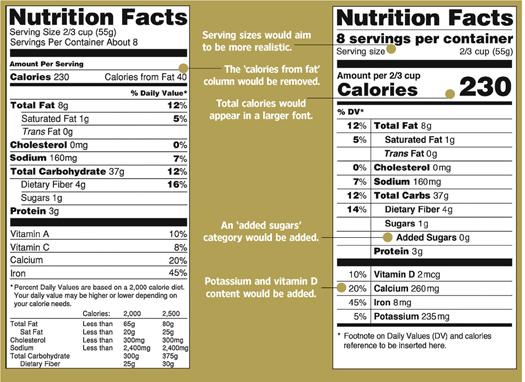When it comes to the question of how to use color in branding and packaging design, there are no right or wrong answers. It’s really a matter of understanding the psychological effects of specific colors and matching those effects through the selection of color to achieve branding and marketing objectives. Simply put, there is science to help guide the selection of color in branding and packaging design.
The response to color has been widely studied in humans and there is empirical data on the common human responses to specific colors. Here are eight colors, including black and white which are not technically colors, and how they have been used in food branding and packaging design.
RED: This is the show-stopper of color and the most emotive one. Red attracts human attention more than any other color, and elicits both positive and negative emotions, ranging from passion and love to danger and aggression. It is widely used in branding and packaging design, primarily to attract attention in visually cluttered retail environments and within crowded product categories. Red is a popular color among foodservice brands (McDonalds, Pizza Hut among many others) and within the crowded product categories such as beverages (Coca-Cola for example).
GREEN: The emotional associations are clear here…fresh, natural, wholesome. Green is a common theme throughout the branding and packaging of products marketed as organic and natural, as well as branded produce products. The fresh aspect of green has been used in foodservice branding (Subway, Soup Plantation for example) where the marketing pitch is focused on fresh ingredients and freshly made. It is no surprise that the branding of Whole Foods markets is wrapped in green.
YELLOW: Interestingly, of all the colors, yellow is the one that the human eye processes first, making it the most visible color in the spectrum. In recent years, emergency vehicles have adopted yellow over red because the eye recognizes yellow faster. This, no doubt, explains the prevalent use of yellow in QSR branding, as so many roadside foodservice brands vie for the attention of passing motorists. Yellow has been widely used in food packaging design, but very often as an accent color…just enough to grab attention away from competitors. Yellow is also associated with sunshine and elicits the emotion of happiness, which explains why it is widely used on snack food packaging.
ORANGE: Orange is very close to yellow on the color spectrum and is also one of the first colors the eye recognizes. In addition, it is a bright color, so it shares some of the attention getting properties of red. The emotions most commonly associated with orange are action, adventure, and vitality. Brands that use orange want to position themselves as friendly, engaging, and adventurous, as evident in its use in foodservice (Hooters, for example) and some high profile non-food brands (Harley-Davidson).
BLUE: Blue is the color most often cited as “my favorite color” in surveys. It is an earth tone associated with water and sky, both calming and peaceful earth elements. For this reason, blue is a particularly popular color in the branding of many non-food products and services (insurance companies like Allstate, Metlife, and financial institutions such as American Express and Bank of America). Blue is a commonly used color in the branding and packaging of fish/seafood products, but that color association is probably more environmental than emotional.
BROWN: Brown is another earth tone and not a particularly popular color. However, its subtle messages of dependable, trustworthy, practical, and natural can be very useful in food branding and packaging design. Brown has been used frequently with green in marketing products with organic and natural product claims. When used sparingly, it can reinforce the notion of healthy goodness (several whole wheat pasta brands incorporate brown into their packaging design, and as do a variety of other grain and cereal products).
BLACK: The color black, technically the absorption of all of the colors of the spectrum, is most often used in branding and packaging design as a contrast to other colors to make them “pop”. Black does have some important associations, in terms of branding and packaging, including formality, tradition, simplicity, and elegance. Upscale food brands and packaging have used black as a predominate color, but even using small amounts of black accents can achieve the same messaging objectives of elegance and upscale.
WHITE: White is technically the reflection of all of the colors of the spectrum and has strong symbolic significance in many cultures. It is the “color” of purity, equality, goodness, and perfection. In graphic design, white is thought of less as a color and more as open or white space to be filled with other colors and graphic elements. Making effective use of white space can emphasize brand elements and create a simplistic, uncluttered feel to logos and packaging design. In an era of heightened consumer interest in”clean” labels and product formulations, more white space is appearing on product packaging in many food and beverage categories.
 Graphic: Wall Street Journal/FDA
Graphic: Wall Street Journal/FDA